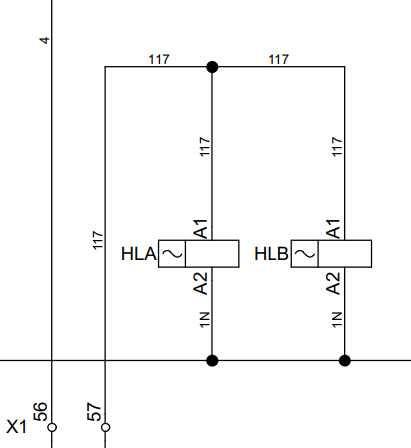Why are multiple earths on the same stud banned?
- tristannewton
- Sep 12
- 2 min read
When building electrical control panels, wiring practices are not just a matter of neatness, they are a matter of safety and compliance. An important regulatory standard is BS EN 60204-1: Safety of machinery – Electrical equipment of machines.
What BS EN 60204-1 requires:
The standard states:
“The connection of two or more conductors to one terminal is permitted only in those cases where the terminal is designed for that purpose. However, only one protective conductor shall be connected to one terminal connecting point.”
This makes an important distinction: while power or control conductors can share a terminal if the manufacturer has designed it that way, protective conductors cannot.
What this means for control panels
In practical terms, the earth stud inside a control panel enclosure should not be used as a single clamping point for multiple protective conductors. Instead, panel builders should use a dedicated earth bar or earth terminal block that allows each conductor to have its own properly secured termination.
Why does this matter?
Protective conductors, or earths, are the last line of defence in the event of a fault. If a fault causes exposed metalwork to become live, the earth conductor ensures that fault current has a low-resistance path back to earth, tripping protective devices quickly and keeping people safe.
If multiple earth wires are clamped into a single stud or terminal, several risks arise:
Poor contact: One conductor may not be gripped properly, especially if they differ in size.
Loosening over time: Vibration and thermal cycling can cause one of the wires to work loose.
Hidden faults: A conductor might appear secure but could slip out under stress, leaving part of the equipment without proper protection.
In practice, these issues could mean that one section of the control panel or machinery frame is no longer safely earthed—something that might only be discovered when a dangerous fault occurs.
Where multiple conductors are allowed
There are terminals specifically designed to accept two conductors safely. A good example is the Wago 2102-5207 (2-conductor ground terminal block (2102-5207) | WAGO GB) terminal block, which has twin clamping points designed and tested to hold two wires securely.
In these cases:
The terminal has been engineered so both conductors make full and reliable contact.
Conductor sizes are clearly specified to ensure safe clamping.
Manufacturers’ documentation confirms the arrangement is compliant.
These types of terminals are often used for looping control wiring or distributing supply to several components. The crucial point is that this principle does not apply to protective conductors. Even with a twin-entry terminal, each earth still requires its own dedicated termination.



